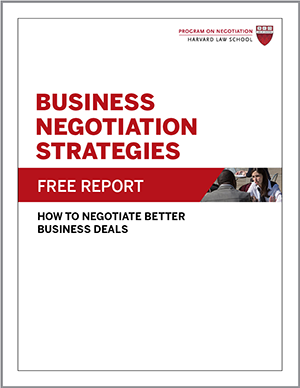
In December 2015 in Paris, delegates from 195 nations celebrated the results of effective group leadership when they reached agreement on a landmark global climate accord. But a year and a half later, the future of the accord sank into doubt when American president Donald Trump revealed he was withdrawing the United States from the pact. With the move, the U.S. government joined only two other countries, Syria and Nicaragua, in opting out of the deal.
In Paris, former president Barack Obama had committed the United States to cutting its greenhouse-gas emissions by 26% to 28% by 2025 and providing up to $3 billion in aid for poorer nations by 2020. Many climate scientists believe the deal’s overall goal—keeping global temperatures from rising more than two degrees Celsius to stave off potentially devastating environmental effects—cannot be met without U.S. cooperation.
According to Trump, Obama made too many concessions in Paris to get a deal and, in the process, put the U.S. economy at a disadvantage relative to those of other nations. In his June 1 withdrawal announcement, the fulfillment of a campaign promise, Trump said he was open to renegotiating the climate pact. But across the globe, heads of state said they would continue to pursue the goals of the Paris accord without the United States.
Was it too soon to count the United States out of coordinated global efforts to address climate change?
Upon Trump’s announcement, leaders of U.S. states, cities, and corporations began unveiling efforts to help the nation pursue its Paris commitments through negotiation and other means. Their cooperative and effective group leadership suggests ways to potentially save a complex, multiparty deal after an important party drops out.
Even before Trump’s withdrawal from the Paris pact, many scientists had expressed skepticism that the United States could meet its climate commitments. That goal has become even more difficult—some say impossible—without the cooperation of the U.S. federal government.
But former New York mayor Michael Bloomberg, a longtime activist on climate change, argues that smaller entities in the United States, ranging from states to cities to businesses, are uniquely positioned to reduce carbon emissions. Although climate-change policy is often set at national and international levels, state and local governments typically put climate rules and regulations into effect.
“The bulk of the decisions which drive U.S. climate action in the aggregate are made by cities, states, businesses, and civil society,” Bloomberg wrote in a letter to U.N. secretary-general António Guterres. “Collectively, these actors remain committed to the Paris accord.”
Many of them feel an urgent need to do so. Worldwide, 90% of cities are located on coastal lands, making them especially vulnerable to the effects of climate change, such as rising sea levels and hurricanes. U.S. cities and states have been taking steps to make their rapid transit more energy efficient, negotiating with local utilities for supplies of renewable energy, and investing in climate-friendly infrastructure projects, according to the New York Times.
In addition, multinational companies headquartered in the United States face a mandate to implement tighter energy and environmental controls, as they are subject to increasingly stringent emissions laws in the countries and regions where they operate. For example, American automakers such as Ford and General Motors must build cars that meet strict economy and emissions standards in Europe, Japan, and China—as well as in states such as California, notes the Times.
How effective group leadership helped form a coalition
Within a week after Trump announced the planned U.S. withdrawal from the Paris accord, Bloomberg began organizing a new coalition on climate change. On the website WeAreStillIn.com, more than 3,900 mayors, governors, college and university leaders, businesses (including Apple, Facebook, Gap, Mars, Microsoft, and Target), and investors signed an open letter vowing to “continue to support climate action to meet the Paris Agreement.” The group submitted a report to the United Nations on progress toward the United States’ Paris climate-accord targets, independent of the U.S. federal government. And Bloomberg committed his charity, Bloomberg Philanthropies, to paying the U.N. the U.S. share of the operating costs for the climate accord, up to $15 million.
Also in reaction to Trump’s climate decision, three state governors—Jay Inslee of Washington, Andrew Cuomo of New York, and Jerry Brown of California—launched the United States Climate Alliance to consolidate U.S. states’ emission-reduction goals, USA Today reports. Within a week, nine more states, including Massachusetts, Oregon, and Virginia, plus Washington, D.C., and Puerto Rico, signed on to the alliance, eventually expanding to 25 states. The alliance aims to strengthen existing climate programs, promote information sharing and best practices, and implement new programs to reduce carbon emissions.
States may be moving toward making themselves accountable for their commitments on climate change as well. Hawaii became the first U.S. state to pass legislation aimed at raising its environmental standards to the level of the Paris climate accord.
Forging international connections
“I was elected to represent the citizens of Pittsburgh, not Paris,” Trump said, in his speech on the climate-accord withdrawal. In a Times op-ed, the mayors of those two cities asserted that, contrary to Trump’s attempt to “pit our two cities against each other . . . we’re more united than ever.”
That effective group leadership is showing up in new climate-change discussions and initiatives between foreign governments and U.S. states. Within a week of Trump’s news, Chinese president Xi Jinping made a show of welcoming California governor Jerry Brown to Beijing for a meeting, highly publicized by the Chinese state media, to discuss joint action on climate change. China is planning a national emissions trading plan similar to the cap-and-trade market operating in California.
For Xi, the high-profile meeting seemed designed to enhance perceptions of China as a leader on climate change and perhaps signal to Trump that China was prepared to “work around him by strengthening ties with allies like Europe, India, and California,” according to the Times.
In addition, the day after Trump’s climate announcement, the Canadian transport minister, Marc Garneau, met with William Peduto, the mayor of Pittsburgh, to discuss climate change, according to the Times. But Canada’s plans to reach beyond the U.S. federal government on climate change were already well in motion: In late 2016, Prime Minister Justin Trudeau assigned his cabinet members to forge ties with key U.S. states on climate and trade. California and the province of Quebec have linked their cap-and-trade programs, and Ontario plans to join the alliance.
When an agreement is disrupted
The U.S. withdrawal from the Paris climate accord offers the following lessons in effective group leadership:
1. Build coalitions to gain strength. If a powerful counterpart backs out of your deal, try to identify partners for a coalition that could take the departing party’s place. Just as individual employees join labor unions to gain bargaining power, relatively weak parties to a negotiation can enhance their strength by banding together with other parties on their level. Through coalition building, U.S. states, cities, and businesses are harnessing their ability to negotiate with foreign governments, and perhaps even with the United Nations, by showing that they have the money, coordination, and determination needed to make significant commitments to slowing climate change.
2. Don’t give away leverage. In negotiation, you can maintain your leverage by conveying that you would be perfectly happy walking away from the table and exercising your BATNA, or best alternative to a negotiated agreement. In his address on climate change, President Trump seemed to be employing that strategy when he said, “So we’re getting out [of the Paris accord]. But we will start to negotiate, and we will see if we can make a deal that’s fair. And if we can, that’s great. And if we can’t, that’s fine.”
Many Democrats were skeptical that Trump was interested in attempting to renegotiate the United States’ climate-change commitments. And, as noted earlier, some world leaders refused to negotiate the issue further with the White House. But even if they had negotiated, Trump had conveyed that he would have no qualms about leaving the table if his demands are not met.
In negotiation, when we commit in advance to reaching a deal, we give away valuable leverage. By contrast, when we convey that we could take a deal or leave it, we are likely to increase our odds of getting what we want.
3. Get your internal house in order. It’s striking that states representing about one-third of the U.S. economy, as well as other local governments and businesses, committed to pursuing a foreign-policy goal that is at odds with the views of the nation’s president. The U.N. seems unlikely to allow U.S. states or other U.S. coalitions to formally represent their nation in the Paris accord. However, for the Trump administration, the emerging coalitions should be a concerning trend. A key task of leaders is to look for ways to coalesce support behind their initiatives.
The risks go both ways. Nations, states, cities, and businesses that collaborate with one another on climate change risk antagonizing the Trump administration and facing retaliation. For example, the State of California currently has a waiver that allows it to set fuel-economy standards that exceed those of the federal government. The Environmental Protection Agency could try to deter the state from forming bold new climate-change partnerships by revoking the waiver, according to the Times.
What examples have you seen of effective group leadership?





